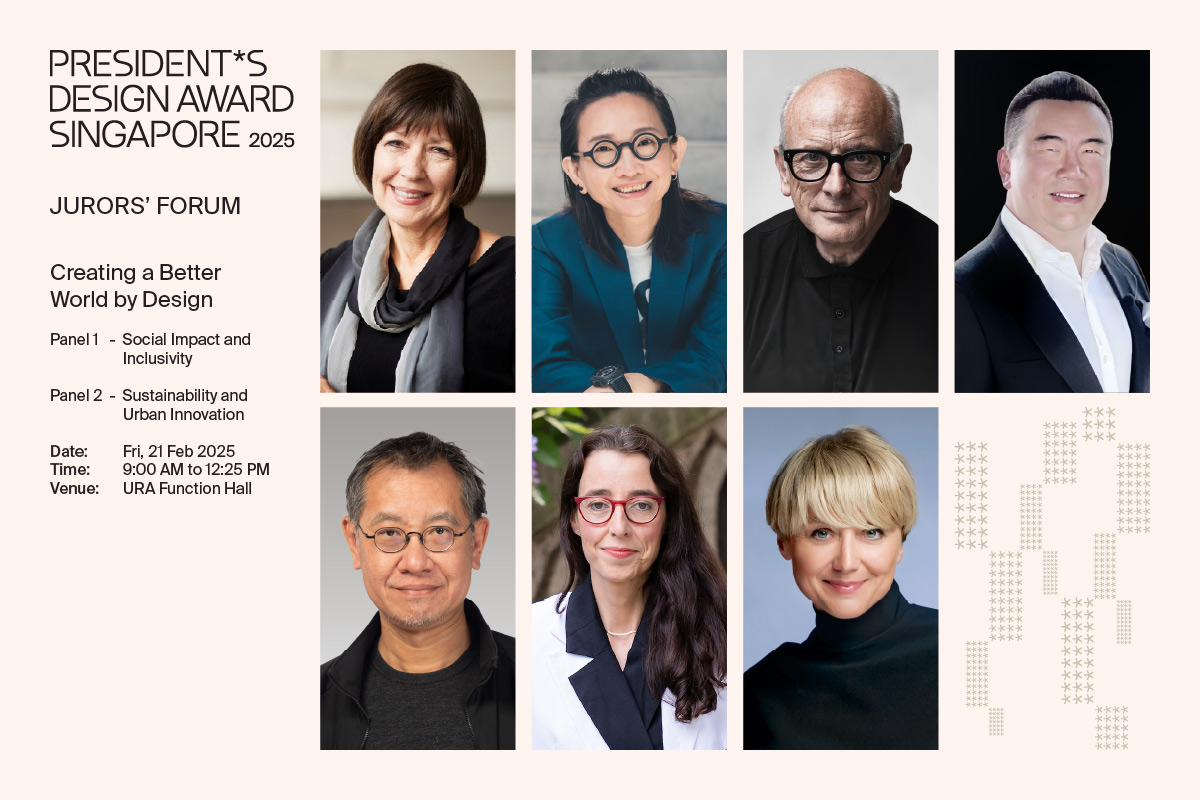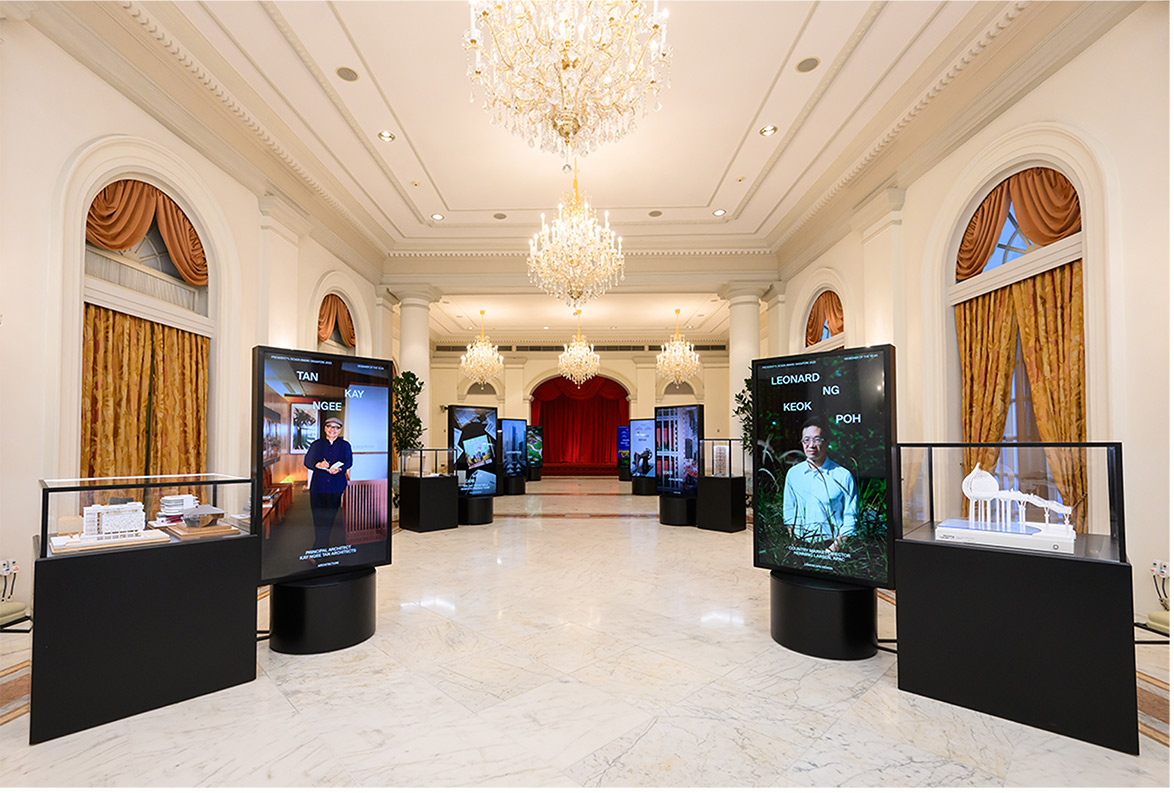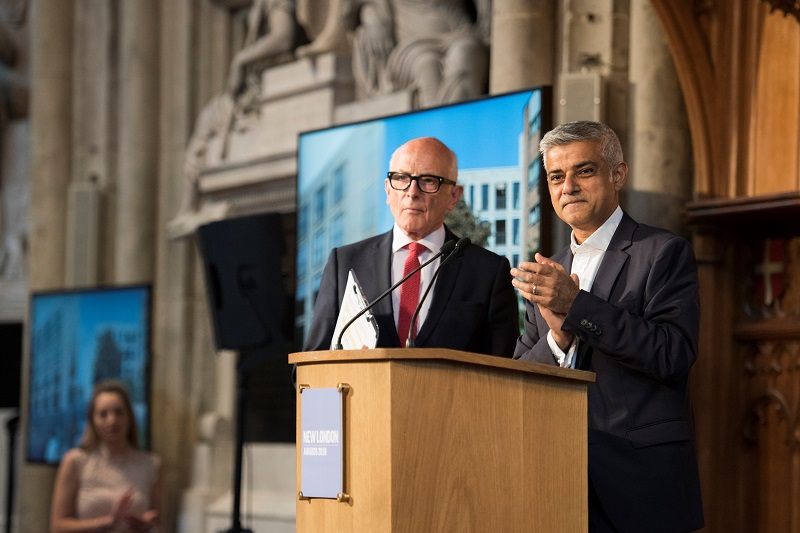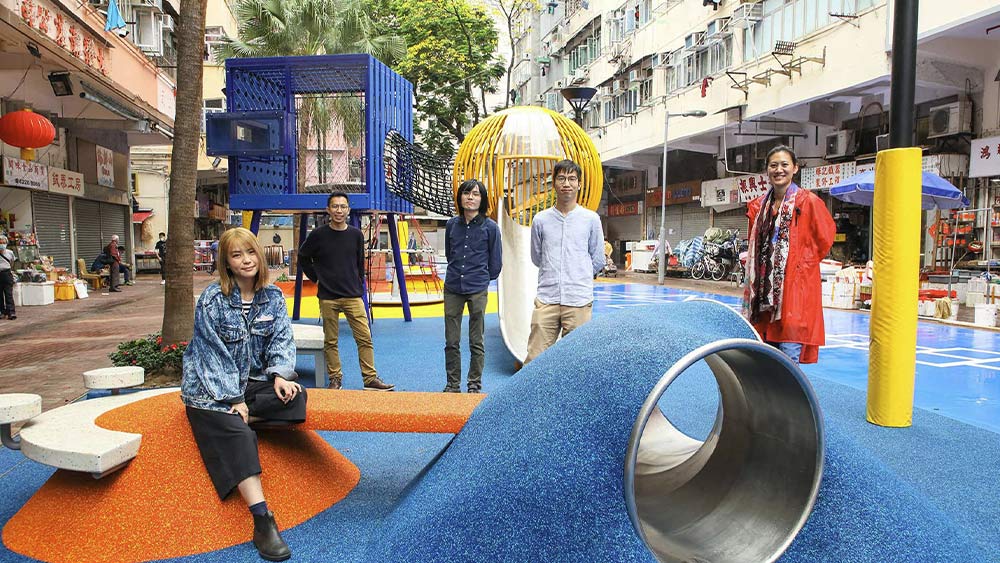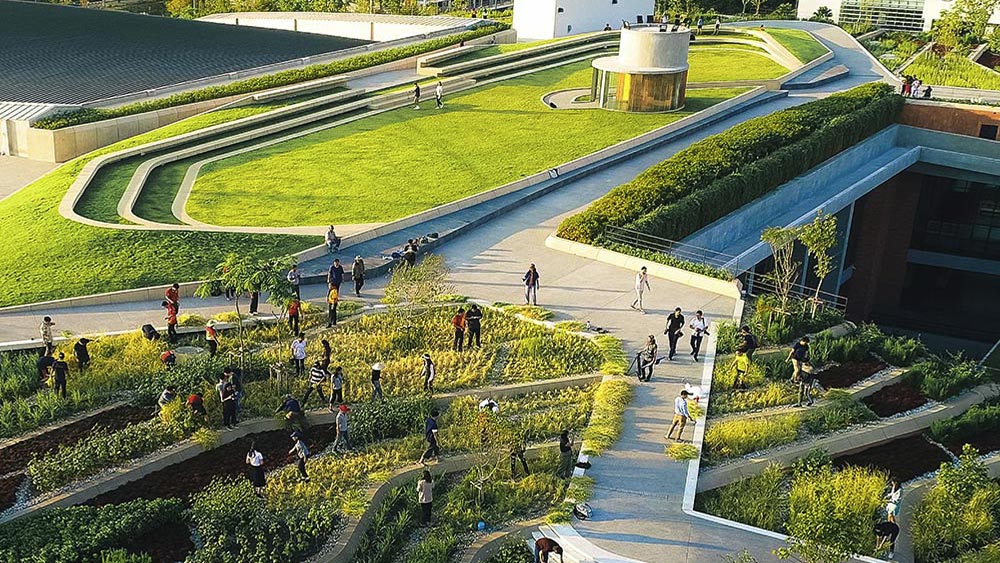P*DA x TODAY AT APPLE: Theseus Chan on the Journey of Being Bold
The President*s Design Award (P*DA) and TODAY AT APPLE collaborate to bring you a series of complimentary workshops throughout the year. Conducted by P*DA recipients, these workshops will focus on different areas in design. Here’s a low-down on Theseus Chan’s session at Apple Orchard Road on 3rd August 2019.
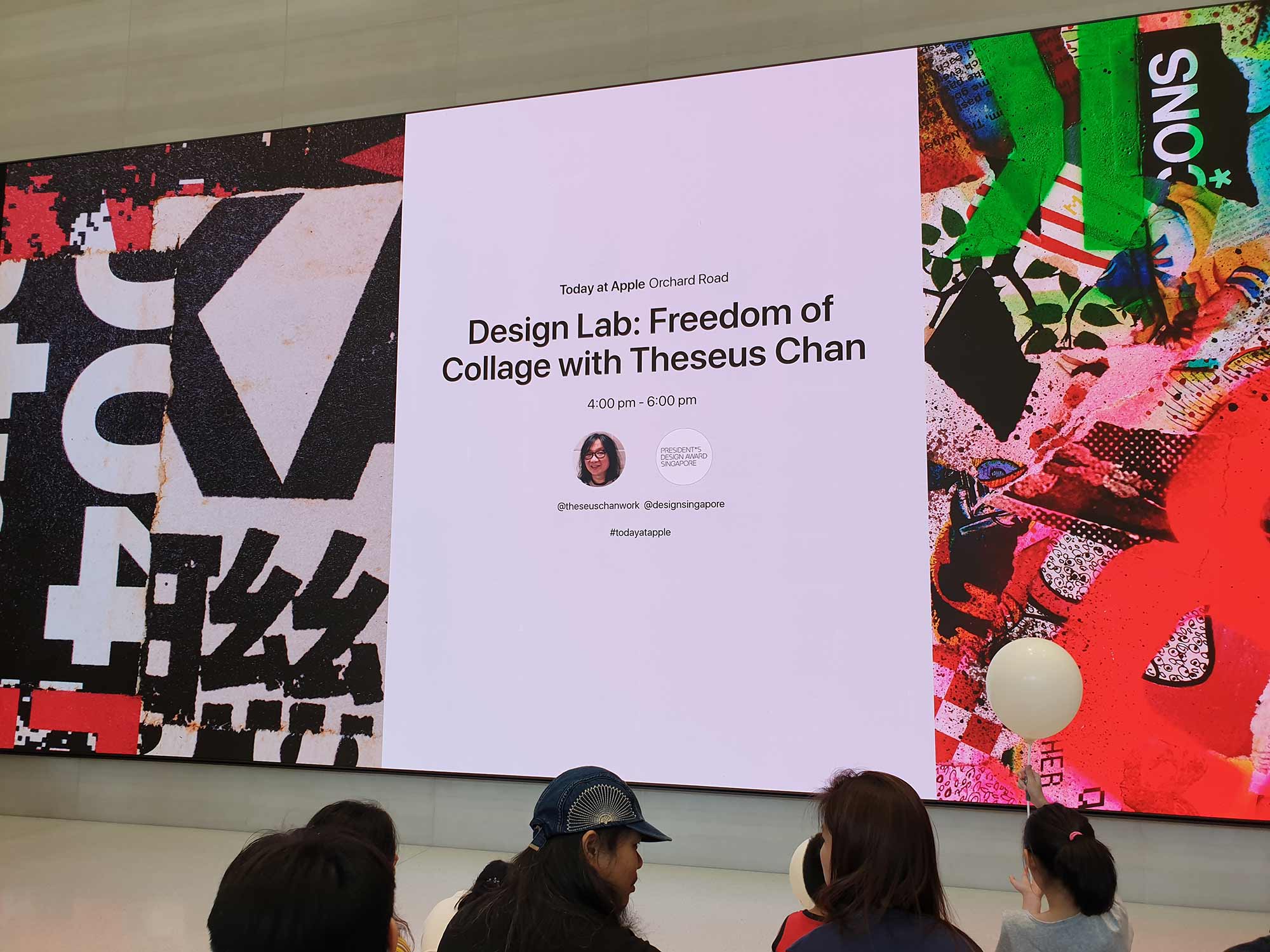
The President*s Design Award (P*DA) and TODAY AT APPLE collaborate to bring you a series of complimentary workshops throughout the year. Conducted by P*DA recipients, these workshops will focus on different areas in design. Here’s a low-down on Theseus Chan’s session at Apple Orchard Road on 3rd August 2019.
At the P*DA x TODAY AT APPLE workshop conducted by Theseus Chan, exploration, improvisation and above all, boldness and purity, were the themes of the day.
“Don’t think too much. Just do.” This was the refrain of the workshop conducted by Theseus Chan, the recipient of the 2006 P*DA’s Designer of the Year and otherwise known as Singapore’s “Godfather of Design”.
Taking heed, the participants eagerly responded with their own bold, playful creations over the course of the workshop.

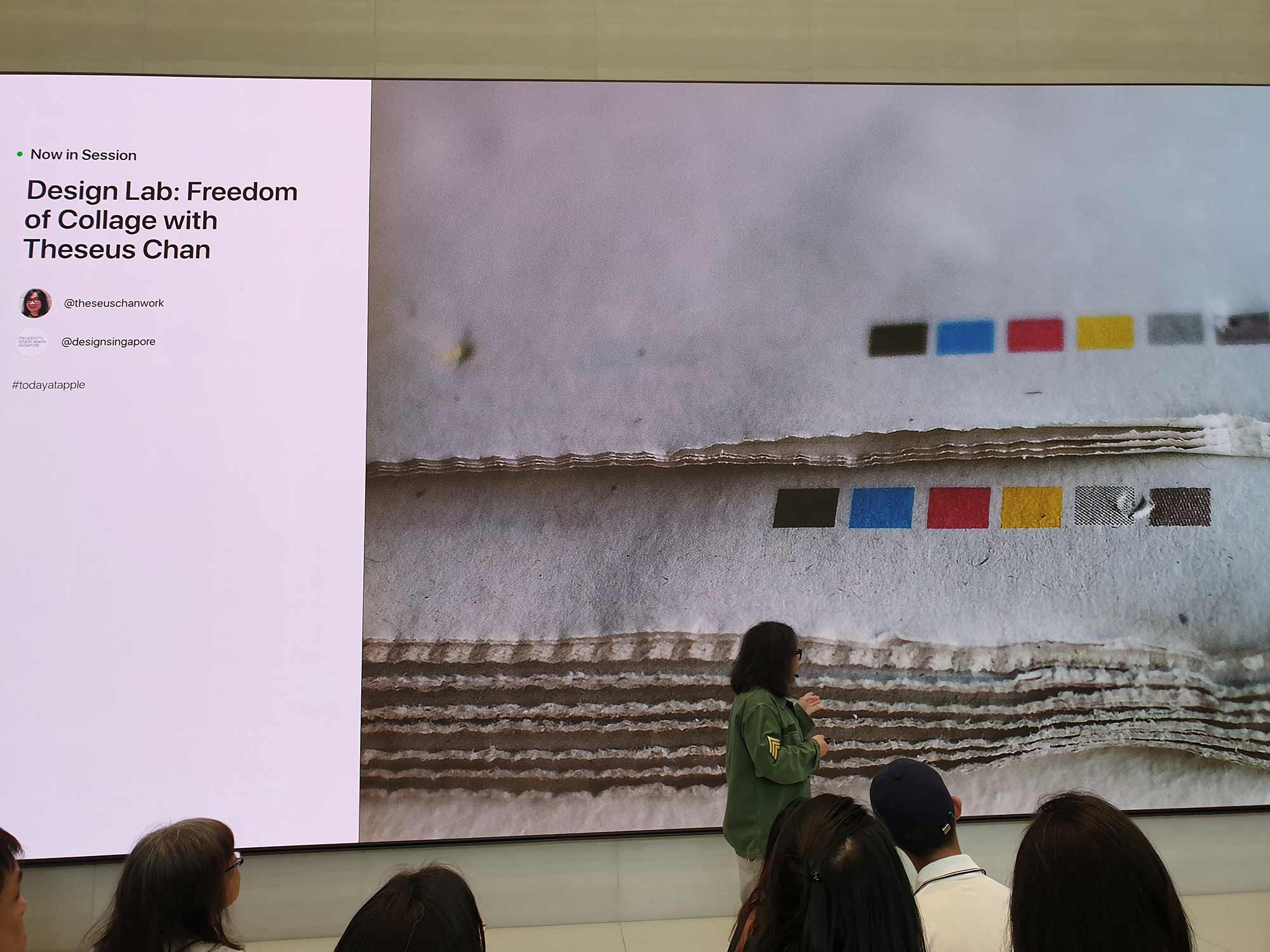

Theseus started the workshop by outlining his vision of the creative process. He began with a story of how he was once turned down for a project, even though his proposal had fulfilled the requirements of the brief.
Or, so it seemed. A key revelation happened when he was asked what he would have done if he wasn’t constrained by the brief. Upon reflecting, Theseus realised that the client was looking for someone who could offer them something beyond the brief, and beyond what they were currently doing — in other words, they wanted someone who showed boldness.
Theseus went on to show how he puts his ideas into practice by presenting examples of his work. These included books that were burned, scorched and ripped apart. A shoebox that was soaked, crushed, torn and put back together with tape. Inkblots that were the result of “mistakes” or “waste-products” of the printing process, salvaged and made into art. There was also a book that was bound on both sides so that it had to be “deconstructed” by the reader before it could be read.
All these works showcased Theseus’ unique aesthetic of embracing mistakes, damage and randomness, which challenged the conventional notions of beauty.
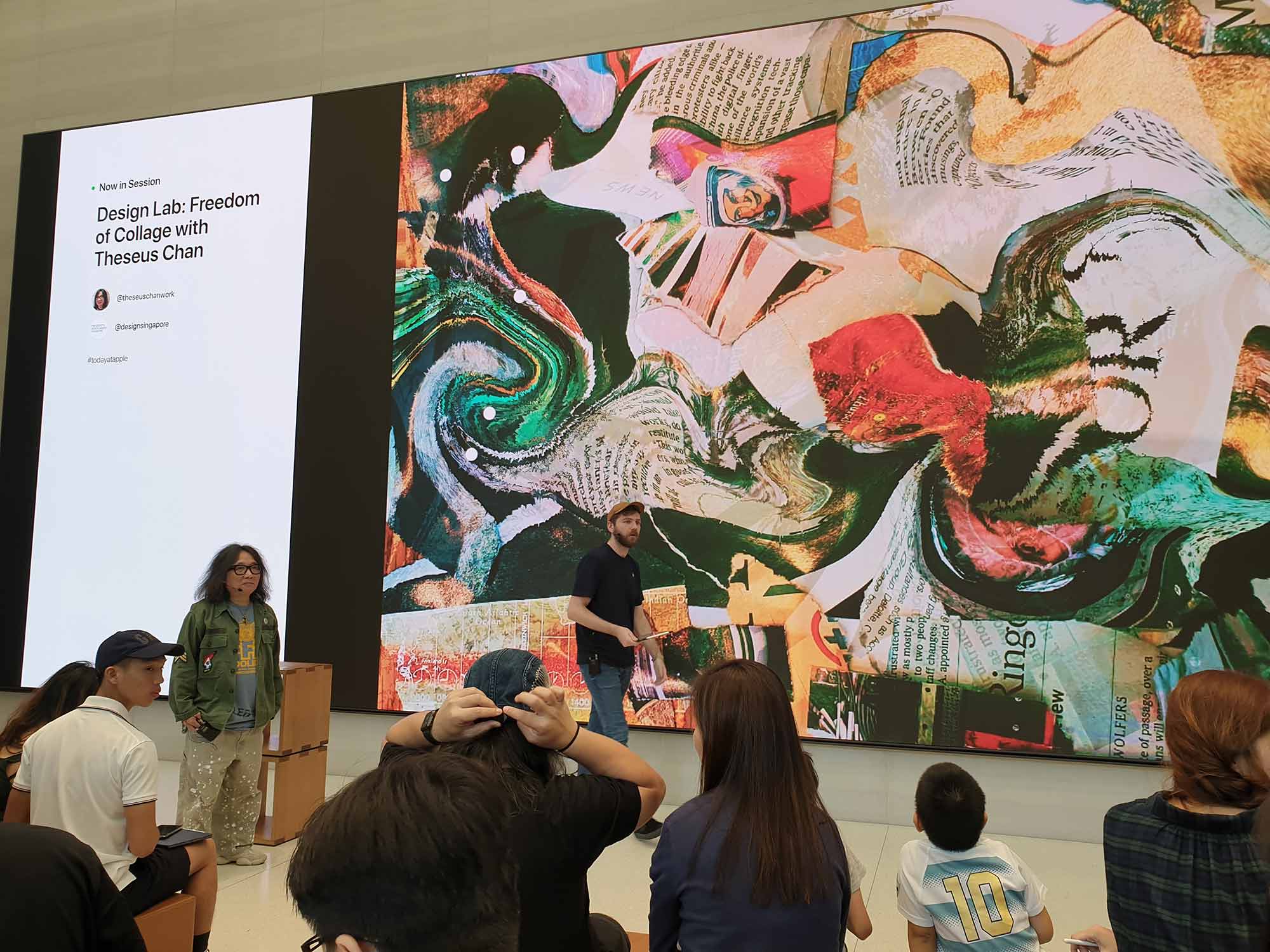
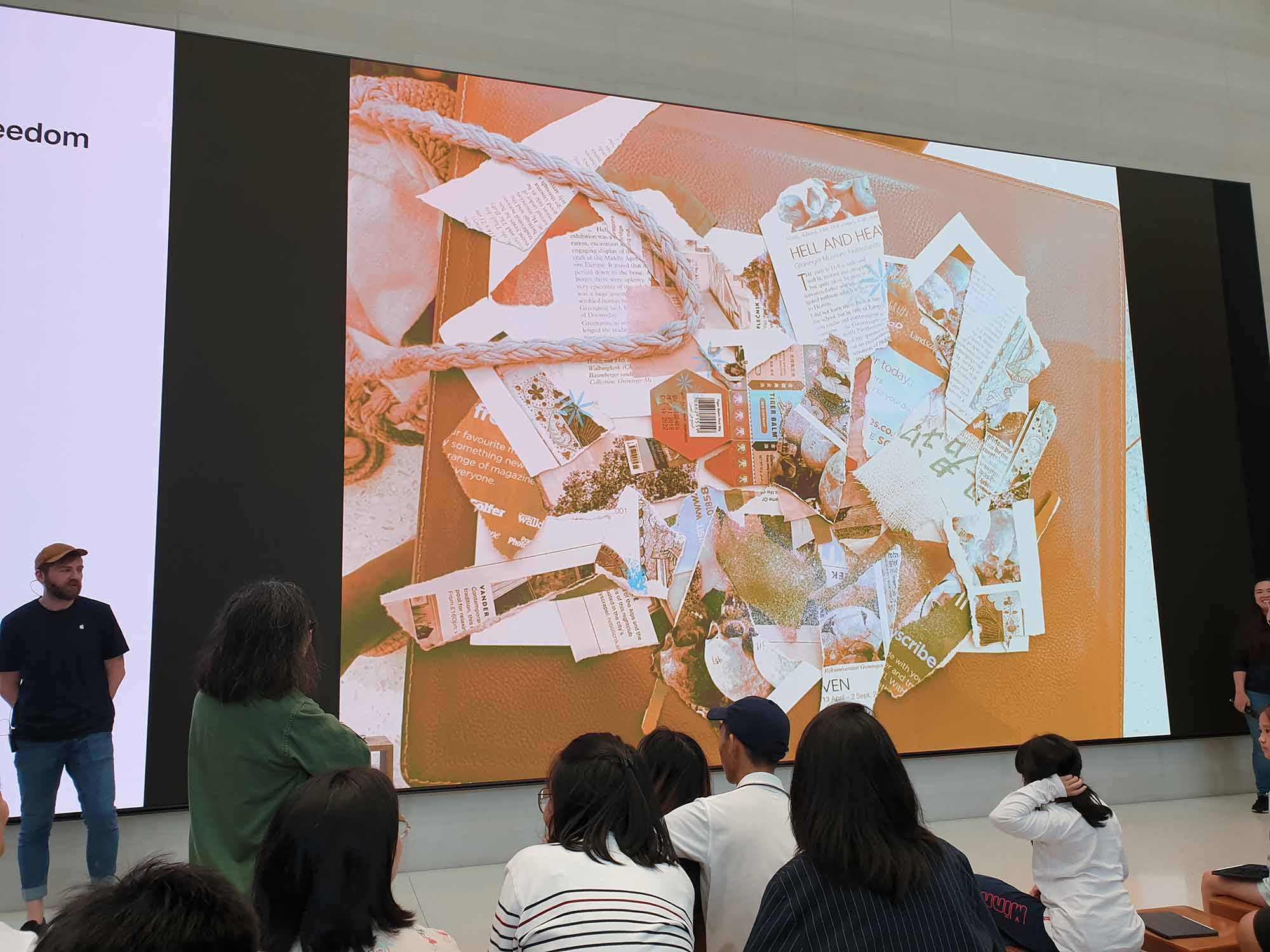
According to Theseus, these conventions are a “mental block”. “There’s too much polish, there’s way too much ‘perfect’ design in the world today,” he shared. “I just wanted to go the other way around. I just wanted to see if there is beauty in designs that are not perfect. The idea is to free yourself from this constraint of having to make something beautiful.”
Sharing his process, Theseus said, “I don’t think of the outcome. I just embark on a journey, fiddle around with it, and I come to a conclusion like that.”
It was now time for the hands-on part of the workshop. First, Theseus gave a live demonstration of his work process. He ripped up shards of magazine pages and random bits of bric-a-brac, and then casually tossed them into a collage. Then he took a photo with an iPad Pros, and with the help of Apple’s Creative Pro Larrison, proceeded to manipulate the image with the Procreate app. All this was projected on a big screen.
With a dash of color saturation, a few swirls of distortion and some splashes of digital spray paint, the artwork began to take shape before our eyes. Theseus and Larrison made it look easy and as fun as child’s play. Theseus joked, “You see the secret of what I did. It’s out. It’s too easy. I don’t deserve to be paid for this.” Self-deprecating jokes aside, the message was clear: “From simple things, you can create something potentially pretty cool.”
The workshop participants were then provided with sheets of magazine pages, iPad Pros and were invited to create their own artworks. The participants – which consisted of children, adults and even a few design professionals – rose to the challenge as they tore up pages, assembled collages and played with the images on their iPad Pros.

When it was time to share their creations, the variety and inventiveness of the pieces made by the participants created a fascinating show. Colour palettes ranged from muted retro sepia to riotous Miami Vice neon. Following Theseus’ call for boldness, participants went beyond the given materials to include bag handles, ten dollar notes (untorn), and origami-like shapes. Some participants mutated their own collages until they became completely abstract paintings.
Theseus and Larrison gave enthusiastic feedback on the works. At one point, Theseus was so impressed by the talent of a ten-year-old girl that he asked her, “Want to work for me?” Throughout, Theseus returned to his theme: “Did you feel a sense of liberation? You’re free and not constrained by whether it’s nice or not nice … just go on this journey of just doing it.”
Theseus wrapped up the workshop by summing up the two main reflections he wanted to share. First, he shared: “in this industry, of art and design and creativity, the whole entire purpose is to really be bold in what you do.” And second, “Have a great sense of purity … Don’t over-think. Just go with this spirit of just doing things, without having too much concern about the outcome.”
+++
Q&A with Theseus Chan
How did you feel about the workshop?
It was fun doing this. It’s always more fun just doing the work. Hearing myself talk … I mean, how many times can you say the same things? But doing is fun. Did you enjoy it?
Yes! I liked your message about doing a lot with a little.
Yeah. When you work with people, most of the time they gravitate towards whatever resource they can get. They don’t tend to look at – Oh, this is what I have. What can I cook? What dish can I make with just what I have? So, I think the trick that I learned is to be able to cook with very little things.
You’ve previously said that without an idea, there is nothing to design. This might seem to contrast with your message today about not thinking too much. What are your thoughts on that?
Over-thinking is this thing that would imprison you. It’s this thing in your head, about whether you’re doing the right thing, whether you’re being responsible, whether you’ve fulfilled your job. I think in creativity, you need to get away from all this. When you’ve been doing this for a long time, your box becomes smaller and smaller, right? But as someone who’s just started, like a child, there’s really no box. I tell parents, don’t condition them that way, telling them that only certain things are right. Yes, with morals and ethics, there are right and wrong things. But in creativity and art, there are things that we cannot imagine. And if we tell them, this is not the right thing to do, then we have totally eradicated that journey to maybe chance on something new. So at least that’s my thoughts, not to be imprisoned by that sort of deep introspection.
But still there has to be some kind of idea, right?
Yeah, of course, everything is idea. There’s a lot of beautiful things right now. But where I come from is from a place where everything still has to have an idea. I started in the advertising industry. And back in the ’80s, the tradition of advertising is that there have to be fundamentals, a strong, solid idea. There’s no point looking beautiful if there’s not an idea to it. So fundamentally we are trying to do a trio of things. I think it has to be a good idea, right? It has to be in context of what you’re going to do. And it has to be extremely well executed. It was difficult for me to understand it in totality at the time, but now I realize, yeah, everything is based on an idea. An idea to make an iPad Pros, an idea to make the iPhone. It’s all based on the idea. We are not beauticians, we don’t just beautify things. We execute it beautifully, obviously, but there has to be a purpose, an idea.
Do you have any words for emerging designers?
What I’ve learned is down to two things. Boldness in thought, boldness in execution. Having the brazen ability to just go and do, even despite people maybe not liking it. And the other thing is to have a sense of purity in what you do. A certain sense of realness in what you do. Because you see, with a machine you can disguise and do so many things. But is it real? Yeah, digital manipulation and all that can do it, but it does not substitute the ability to discover things, when you are making things and doing things. So to me, these are the two important principles that I believe will help young people.
+++
—
Article written by Julian Lim
